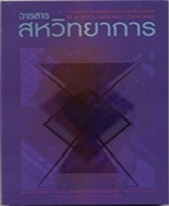What Explain Foreign Aid Allocation by The Emerging Donors?
คำสำคัญ:
Foreign Aid, Emerging Donors, Official Development Assistance (ODA)บทคัดย่อ
The so-called emerging donors have increasingly been subject to academic and policy studies in recent years. However, until now, the number of empirical studies on the way these donors allocate their aid and the factors influencing their aid allocation are still limited. In this study, I focus on Thailand’s aid allocation. The analysis in this study is based on the recipient need (RN), donor interest (DI), and recipient merit (RM) perspectives. The data on Thailand International Cooperation Program (TICP) provided by Thailand International Development Cooperation Agency (TICA) during 2007-2012 are analyzed by using the Logit and Tobit estimations. The results reveal some interesting patterns in Thailand’s ODA allocation. Firstly, the allocation of TICP does not seem to be driven by the poverty reduction motive. In particular, TICP tends to favor developing countries with better economic development indicators. Secondly, TICP is not allocated in response to economic and commercial interests. It is found that bilateral trade relations between Thailand and its partner countries do not significantly explain whether (and how much) partner countries will receive TICP. This runs counter the critical view on emerging donors which argues that these donors provide aid mainly for their commercial or short-term economic benefits. Finally, TICP tends to go to developing countries with sound institutional framework and favorable policy environment. All in all, my results reveal that Thailand’s ODA allocation is not well explained by RN and DI perspectives. Rather, it is likely to be explained by the institutional and policy environments of partner countries, which is in line with the RM perspective.
ดาวน์โหลด
เผยแพร่แล้ว
รูปแบบการอ้างอิง
ฉบับ
ประเภทบทความ
สัญญาอนุญาต
บทความทัศนะ ข้อคิดเห็น ภาพที่ปรากฏ ในวารสารเล่มนี้เป็นความคิดเห็นส่วนตัวของผู้เขียน บรรณาธิการและกองบรรณาธิการไม่จำเป็นต้องเห็นพ้องด้วย และไม่ถือเป็นความรับผิดชอบ ลิขสิทธิ์เป็นของผู้เขียนและวิทยาลัยสหวิทยาการ มหาวิทยาลัยธรรมศาสตร์ การตีพิมพ์ชื่อต้องได้รับอนุญาตจากผู้เขียน และวิทยาลัยสหวิทยาการโดยตรง และเป็นลายลักษณ์อักษร






